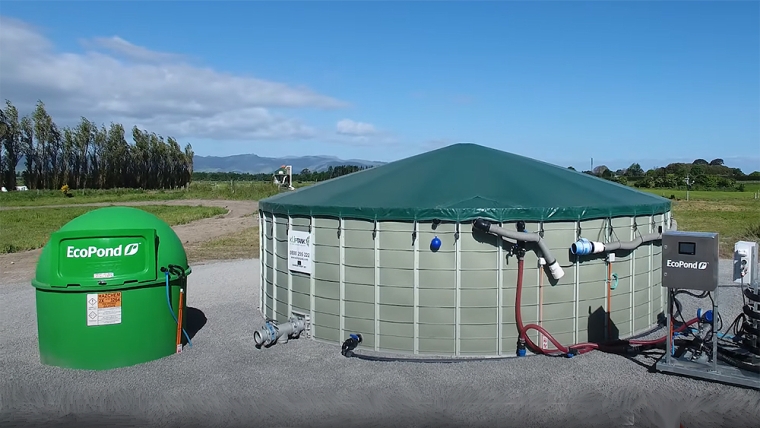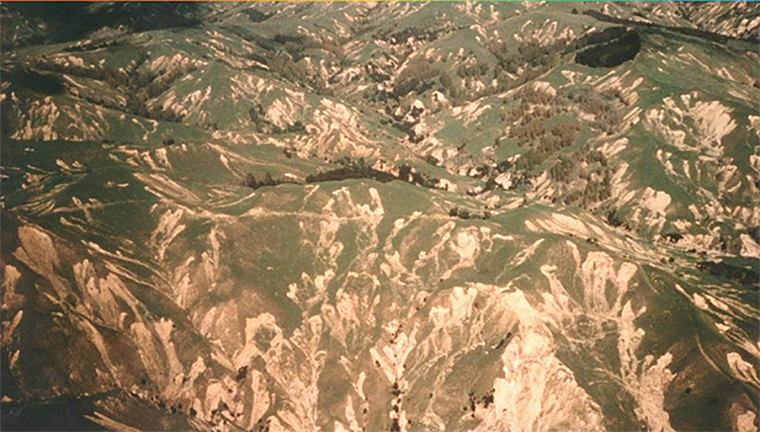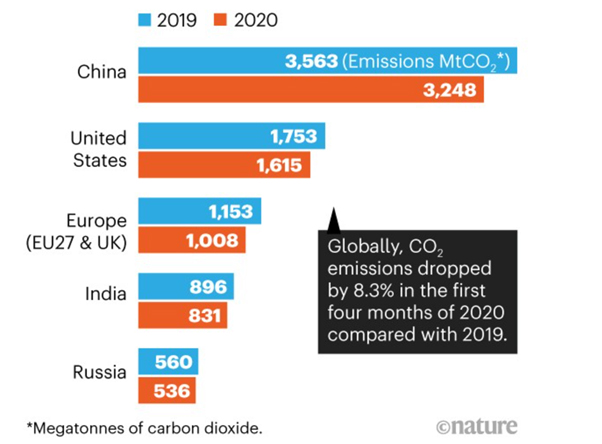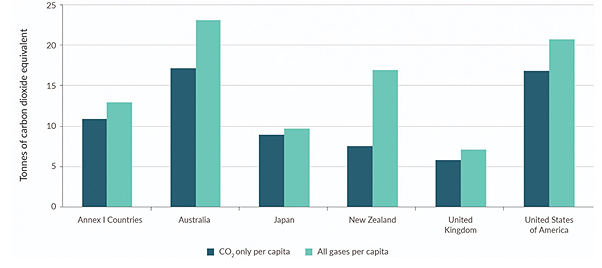
As COP26 begins to wind down the cynic in me thinks “well, that was a waste of time”. However, this is a little unkind on the conference as some progress has been made.
Probably the area that has brought the most promise is the joint announcement from the USA and China, the two largest sources of emissions. They intend to work together and share technologies that can reduce GHG emissions. The countries said they will work together on deforestation and hold a bilateral meeting next year about methane.
Light on any meaningful detail, the fact they are and intend to be talking provides some promise.
The lack of reduction commitments from many of the conference attendees, while not surprising, must be concerning. It sounds as though there is more disagreement than agreement overall. Depending on whose figures you go by the current increases in global warming in the next decades will range between +2.4oC up to +2.7oC with the most optimistic figure being +1.8oC.
None of these forecasts provide for a positive future given we are currently at +1.2oC above historical norms.
Two of the biggest emitters, China and India, have pledged to be carbon neutral, China by 2060 and India by 2070. In the meantime neither country has peaked in their emissions outputs with China just promising to have done that by 2030.
Borrowing a summary from the New York Times there a four main sticking points to be resolved at the conference:
EMISSIONS CUTS
Under the landmark Paris climate agreement of 2015, every nation agreed that humanity should be “pursuing efforts” to hold warming to just 1.5 degrees Celsius above preindustrial levels. The initial pledges in Paris would not get the world there, but over time, the hope was, nations would ratchet up their efforts. Exactly how to accelerate action remains a big source of contention.PAYING THE BILL
Money has long been a sticking point in the fight against climate change, and it was no different in Glasgow. Developing countries are being urged to accelerate their shift away from coal and other fossil fuels, but they say that they lack the financial resources to do so, and that rich countries have been stingy with aid. The world’s wealthiest economies have pledged to do more, but are still falling short of their promises.REPARATIONS
When climate-fuelled storms wreak havoc, it is the poorer nations that often suffer, even if they have done little to contribute to the problem. Demands for compensation are continuing to grow.CARBON OFFSETS
The Paris accord called for regulating the fast-growing global market for carbon offsets, but that it is an extremely dense and technical subject. Negotiators are still trying to find a way through the thicket.
Given New Zealand is relying on the Emissions Trading Scheme (ETS) as a means to bring emissions down, and also given that the Government is planning on working with over countries to gain credits to top up our shortfalls, the lack of agreement on Article 6 should be of some concern.
Article 6 of the Paris Agreement is one of the unresolved elements of the United Nations "rulebook" which will set out the terms of how governments can trade emissions reductions to help meet climate targets.
New Zealand’s Minister James Shaw is co-chair of transparency talks at the summit, aimed at ensuring countries' emissions reduction pledges are verifiable. Perhaps indicating just how much game playing is going on internationally even New Zealand, some would argue, has been a little loose with numbers.
If, as most experts agree, extreme weather events are strongly linked to the increasing global temperatures and it seems the temperature is going to keep climbing for some decades yet.
Then land owners (I include foresters, livestock farmers, arable farmers and horticulturalists here), need to play a careful public relations hand. As a result of the South Canterbury floods of last winter central government injected $5 million into the region to assist farmers and rural communities.
This pales in comparison to the approximate $200 million (2020 dollars) that went into the East Coast of the North Island after Cyclone Bola and while the South Canterbury floods were certainly devastating for those affected the scale was considerably less than what occurred in 1988.

Landowners’ ability to withstand future droughts, floods, fire and what ever else nature chooses to throw at us will be sorely tested and only by working as a cohesive society will New Zealand be able to work a path through the future.
Farmers need to show that they can also be part of future solutions.
It looks unlikely, at least in the short to medium term that the internationally community is going to get its act together.
The risk to landowners and particularly livestock farmers is that if they expect society to assist them when things turn sour, then they are going to have to convince society that they are worth helping. This is not an easy task especially when there are many already calling for downsizing of dairying.
Other livestock system will also end up in the firing line as climate issues worsen. Rather than looking at what is the minimum that the different sectors can do the psyche needs to shift to trying to maximise what can be done.
However, regardless of what New Zealand and in fact most smaller nations do, until the “big 5” make comprehensive reductions, little is going to improve. Together they contribute over 50% of all emissions. The recent reductions mentioned on the graph below have come from the impact of Covid-19, not any planning by the world’s leaders.

On a positive side, many will have seen the progress made at Lincoln University on the news on TV1. That showed a relatively simple innovation by treating dairy effluent in ponds, and the methane emitted can almost be eliminated. Developed with Ravensdown’s EcoPond system, they have virtually eliminated the methane emitted from effluent ponds, thereby cutting approximately 5% off the farm’s methane emissions.
Given that agriculture is (only) tasked with reducing methane emissions by 10% by 2030, this puts dairy farmers at least halfway there. And perhaps is the opportunity to lift the expectations over what could be achieved in the next 9 years. I was a little disappointed in the Greenpeace spokesperson’s reaction which was rather disparaging. She seemed more concerned that the cows were still here, regardless of the reduced methane. It’s the impact of cows and other livestock that is the problem, not the animals themselves.
For what it’s worth, New Zealand emits 0.17% of global emissions, although our per capita emissions are more difficult to ignore.

P2 Steer
Select chart tabs
55 Comments
If dairy reduced by 5% by capturing methane from effluent ponds this would probably assist agriculture overall with methane reduction I presume this would need to be compulsory to get buy in from dairy . If agriculture doesn't get with its public relations they will find customers will start to seriously resist their products and it will fast track alternatives and carbon taxes by their international customers.
I’m not sure where the 5% comes from but I think our friends Xi and Biden will be telling our government their expectations early next year.
There should be some laughs along the way.
That misses the bigger message: he's talking 2+ degrees; beyond 2 we get feedback loops, meaning 2 is really 5-7-9......
If feedback happens, forget agriculture, exporting, GDP, just about anything.....
And below 2 degrees, fossil fuel-derived fertiliser probably has to be off the menu, too. Good luck with Ag as practiced, in that scenario.
I've yet to see any sign of that, looking like a record dairy pay out this season. If consumers want to put their money where there mouth is, they would first look at their own lifestyles. NZ methane emmissions have been falling for a few years now and are already at net zero compared to 2005.
The only reason govt is attacking methane emmisions is because they recognise the impossibility of getting any meaningful reductions in the rest of society.
Cutting back on fossil fuel imports would improve our trade balance and make a meaningful difference, but the 'consumers' you mention above will not make any sacrifice.
"but the 'consumers' you mention above will not make any sacrifice."
Deserves repeating.
Dunno. Better to repeat accurate statements.
Plenty of consumers are deliberately trying very hard to reduce fossil fuel use. What's needed is also action at the govt and industry level.
For example, councils and NIMBYs resisting intensification stand in the way of reduced individual car travel. As does NZTA and central govt failing to develop separated bus lanes when they do motorways (for one example of many).
We have to work on solutions at both individual and govt/industry levels. Putting it all at the feet of individual consumers is just a tactic to avoid acting at all.
Intensification is not the answer. Less people and much more spread out, is the only sustainable format.
Too many CC-only green types miss the energy issue. No city was more than 1 million, before fossil energy. Nor will be, after.
Sorry
Putting it at the feet of council and govt is a tactic to avoid doing anything at all.
How about mass rollout of supplementary seaweed feed Guy? Could easily be done for dairy as the cows come into the shed for milking... It looks to be dropping methane emissions from cows by a huge amount. Sure it might look like early days, but it looks like the government wants to go as slow as possible.
Have we considered the impact on the sea life of stripping the seabed of weed?
Of course not…
We can grow and harvest seaweed the same way we do with aquaculture we currently do with shellfish etc. Seaweed farming has been a thing for only about 500 years or so...
We have six million cows, what area of sea will we need in seaweed farms, and the establishment costs?
We are an island nation surrounded by an expanse of sea, we have a lot of potential for seaweed farms. Such farms could also help other sea life by providing a breeding ground for them while seaweed grows. It only needs to be a fraction of their feed (something like 0.5%) for noticeable results.
Could we not just reduce the number of cows until we meet expectations and then increase the numbers if technology becomes available?
We have had recent practice at culling herds.
Could we not do both? Maybe try convincing a farmer to cull herds, that's literally culling their income.
We have had practice at income support as well recently, it may be cheaper than carbon credits gained offshore.
It probably is - but income support for living within our environmental means is not a market mechanism.
We are fixated on market mechanisms - and while producers struggle, banks are recording record profits. I just don't get it.
Scams are complex by design. Complexity is a feature not a bug. 99% of fuel users don't have the faintest every time they fill up their car they are gifting $15 to the landed gentry and foreign carpet baggers to plant trees and other rorts. The team of $55 million won't tell as they are also on the take by design.
The dairy herd grew by 50 percent over the last 20 years so they've had their income at NZs environmental expense: until their emissions are included in the ETS every net taxpayer is funding dairy farmers private profits
The dairy herd numbers peaked in 2014/15 and have remained below that ever since. Total dairy cattle numbers peaked in 2014 and have dropped 6.5% as at 2019. https://www.stats.govt.nz/indicators/livestock-numbers
Net taxpayers are funding corporate profits for business, especially for those businesses which are receiving free carbon credits like Tiwai, NZ Steel and Fletchers.
The first thing you see when you open that link:
"Dairy cattle numbers increased by 82 percent nationally from 3.4 million to 6.3 million
Between 1990 and 2019"
The growth in dairy cows was matched by a corresponding decrease in sheep and pure beef cattle - overall stock units haven't increased.
kiwikidnz - try another target - the dairy herd grew but methane has been falling since 1990. So you will be sending money to farmers for reducing methane. And while you are at it you can pay them for their soil carbon too.
https://pcep02s1.blob.core.windows.net/cache/5/a/1/3/6/8/5a136842a51fbc…
Sorry, but the seaweed thing is exactly the same as the monocultural AG thing: you're taking nutrient from something else in the food web. It's a flawed as planting trees to justify fossil fuel use.
We all displace something, just by being here, but we still need to be honest about how much we can displace, of what, where.
Disagree here, we have already extracted massive amounts of life from the sea, which means it can support significantly more than it currently does. Large areas of seaweed where people cannot fish would potentially help grow other sea life as well, a potential win-win scenario.
It's not a zero sum game regarding nutrients. Biophysical systems are like economies where the velocity of money and it's secondary effects in an economy has a large effect. In biophysical systems, one species waste has the potential to become another species nutrients. With our extractive nature we have interrupted these systems however, often breaking the chain and leading to fisheries collapse. But if large seaweed farms have the potential to use waste products as their inputs, we could be on to a triple winner. Indeed, mussel farms produce large amounts of nitrogen in the surrounding water as waste, guess what seaweed needs to grow? Yep, lots of nitrogen...
blobbles,
You might want to look at this; https://www.frontiersin.org/articles/10.3389/fmars.2019.00084/full
It describes the effect on bull kelp in the S Island as a result of a marine heatwave in 2017/18. You can be sure that we will have more of these and this year might be one of them.
PDK is right. That's not the answer.
Hang on, we had a marine heatwave (likely climate change related, so due to lots of methane in the atmosphere), which is a reason farming seaweed which likes warmer climates, won't work? Please explain why I am wrong about biophysical inputs/outputs before claiming it's not the answer...
Not a silly idea but we shouldn't get ahead of ourselves. What's the carbon footprint of farming processing and transporting thousands of tons of sewed around the county. And if it's not cheaper than growing grass why would a farmer do it.
Sewed does fix the nitrous oxide issue either. More potent and longer lasting than methane. Seems to me a reduction in our dairy heard is the only real solution. Cows for milk cheese butter etc is ok. Dry milk power for processed food needs to be a thing of the past.
Currently we have a rather large carbon footprint using PKE as supplementary feed for cattle, coming from Indonesia and Malaysia. A locally grown alternative that draws down waste nutrients from other aquaculture and drawing down ocean carbon is likely to be significantly better than aiding in clear felling rain forests.
Yes, we will need to process it, much like we get processed PKE, however a local industry is bound to be much less carbon intensive. Transportation - we should be decarbonising that as well, as I understand there are plans for hydrogen in NZ which may deal with this as well.
We may be small, but we still count as a country, and a respected one at that. What we do does matter.
I would say talks will go into overtime, and there will be an agreement, everyone simply realizes there has to be.
We haven’t done anything significant yet, it’s just a talk fest, so that is a problem.
solarb,
"What we do does matter.". In any material sense, it doesn't matter at all. If we could magically reduce our emissions to zero now, the global effect would be no more than a rounding error.
It matters for our credibility. If as you say we are 'respected', then we must be seen to be playing our part. Otherwise, we could find consumer resistance to what we want/need to sell them. There is also a moral dimension. If global warming is real-and it is- then we are morally required to play our part in mitigating its effects.
It certainly does matter.
For us wealthy folk with higher emissions per capita to say to the poorer folk "well, there are more of you - your overall contribution of carbon is higher so you must cut so we don't have to" is just an unfathomable level of entitlement mentality.
And still everybody is looking the other way in the matter that is the greatest factor causing human made global warming. I.e. the number of humans on earth. Until\ we address our out of control population growth all the rest of the talk is just an exercise in futility.
So why the fear of a pandemic?
The message could've been catch covid for the greater good.
Absolutely we need to address overpopulation, but that will take generations.
The other part of the equation is the embedded carbon in all the unnecessary crap we buy then throw away. I think most kiwis would be shocked at how poorly they would rank against the rest of the world's citizens true carbon footprint.
Maybe everyone should get an equal carbon ration that can't be traded...
Beanie - thanks for the oxymoron of the day.
Unfortunately, we are 3 or 4 time overshot NOW - that won't take even one generation to resolve.
And yet most of the population and all the growth is in areas of LEAST consumption.
How can this be?
What about China, what about population, what about this amazing technology that could, errrm, reduce methane emissions by a few percent, what about us being really small (and very wasteful), what about Irish dairy farms with cows that fart more....
It is this 'whataboutism' that is propelling the planet towards oblivion. How about we actually do our bit - just, you know, our actual fair share? We have 250 megatonnes of CO2 left to burn - that is our fair share of the remaining capacity of the atmnosphere to absorb before we breach 1.5 degrees. We will break through this in 2029 at this rate.
“For what it’s worth, New Zealand emits 0.17% of global emissions, although our per capita emissions are more difficult to ignore.”
Why are the per capita emissions more difficult too ignore?
after all NZ Ag feeds more than 40million people, put that into your per capita calculation and suddenly we look fine, or perhaps use a per hectare calculation again best in the world!
Could you explain how we feed 40 million people?
On milk powder?
Last time I looked on the ACT party website they claim NZ feeds 100 million people, I personally think 40 million is pushing it. We produce mainly protein and can't even grow enough grain for our own needs. Much of the land we are grazing is quickly degrading and is extremely reliant on fertilizers. To think our economy can rely on existing production from our fragile landscape forever is probably a dream.
Nearly all of the land we are grazing is far more productive than it has ever been. The difference between the actual facts and what people think is happening, is staggeringly vast!
Of the good contoured productive land I would agree with you Jack, but unfortunately we are not endowed with vast areas of that. Most of NZ farmland is on hillcountry which in a large percentage is susceptible to erosion particularly when cattle are grazed. Dairying on our productive areas are best use in my opinion. There are some dairy farms the are bordering on unsustainable due to their reliance of grazing fragile hills.
I don't agree, what makes hill country bad for dairy is all the up and down walking which reduces the amount of energy left for milk production. Dairy cows leave more grass behind than other grazing animals. From what I've seen, the more productive the land, the less erosion you get, preventing erosion on the Wither Hills has been done by adding fertilser which grows more pasture and crops and carries more stock
fertiliser derived from?
Fossil fuel feedstock.......
Adding up some published figures we seem to be exporting 4-5 million tonnes of food per annum.
Assuming a kilogram of food per person per day or 3 people per annum per ton we may be able to feed 12-15 million people but that doesn’t allow for waste, 30%, so maybe 7-10 million people.
- add to this we are the worlds biggest log exporter suppling about 20% of the global trade.
The dairy effluent pond treatment is simply century-old urban sewage treatment technology scaled back to farm-size ponds. Iron sulphate as a coagulant, etc.
High time for such obvious sideways adoption of tried and tested solutions. Plus IoT measurements and automated treatment via injection etc. Scope for a Lot more along these lines.
Now if only aforesaid urban sewer systems were prohibited from dumping raw untreated input into the nearest creek, harbour, bay or gully, whenever there's heavy precip....
ETS may become NZ's very own version of the Bitcoin.
Some comments are misleading.
Dairy cows are basically biological machines that turn food into milk. Fewer cows does not mean lower emissions if those cows are moved progressively from system 1 methods to system 5 which is exactly what is happening as we move to Dutch farming practices with intensification and higher methane outputs per animal.
And methane emissions per beef cattle or sheep stock units are a tiny fraction cf dairy units.2
Do you consider grass to be food? The great thing about methane is that it is part of a closed cycle, it is short lived, degrades into CO2 which plants absorb, then cows eat the plants convert some into sugars and proteins, some of the leftover makes its way back into the atmosphere so the cycle can repeat.
The great thing about fossil fuels is that carbon was never in the atmosphere but stored in the earths crust, where it is extracted and burnt, then sent out into the atmosphere, where it accumulates and causes climate change.
No - that methane can be traced to the fossil feedstock that is fertiliser - not to mention the shipping, trucks.......

We welcome your comments below. If you are not already registered, please register to comment
Remember we welcome robust, respectful and insightful debate. We don't welcome abusive or defamatory comments and will de-register those repeatedly making such comments. Our current comment policy is here.